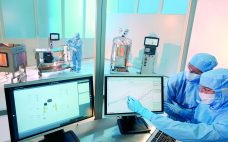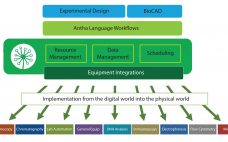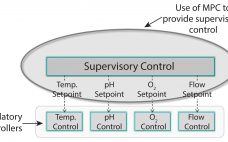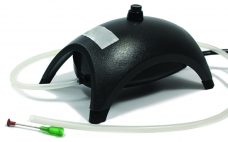Attendees at this year’s Biotech Week Boston (24–28 September) had the opportunity to participate in several preconference symposia on the first day, including one on advanced control strategies for bioprocessing and biomanufacturing. Chaired by William Whitford (GE Healthcare), the session included presentations from Dan Kopec (Sartorius Stedim Data Analytics), Markus Gershater (Synthace), Jonathan Bones (National Institute for Bioprocessing), Robert Thomas (Loughborough University), Chris McCready (Sartorius Stedim Data Analytics), and Victor Konakovsky (Newcastle University). BPI has collaborated with conference organizer KNect365…
November 2017 Featured Report
Integrated PAT Automated Feedback Control of Critical Process Parameters Using Modern In Situ Analytics
Simply put, the best way to control a critical process parameter (CPP) is to measure that specific parameter, integrate the live signal into your control system, and apply a smart feedback algorithm for an automated control loop. The challenge in doing this for bioprocesses has been due, in part, to the complex, highly dynamic, and variable nature of the process along with the lack of robust, scalable, and multiformat (single-use or multiuse) technologies that can monitor (in real time) such…
Accelerating Process Development Through Flexible Automated Workflows
Synthace began as a bioprocess optimization company in 2011, spun out of University College, London. The company worked on multifactorial approaches with 15–30 factors simultaneously instead of seven or eight. The work investigated genetic strain engineering factors alongside process parameters, defining deep interactions between the way strains were designed and the way they were treated in bioprocesses. Those complex experiments gave unique insight into the complexities of biological processes, but they were exceptionally taxing to plan and carryout manually. Automation…
Model Predictive Control for Bioprocess Forecasting and Optimization
Automation hierarchy in bioprocess manufacturing consists of a regulatory layer, process analytics technology (PAT), and (potentially) a top-level model-predictive or supervisory layer. The regulatory layer is responsible for keeping typical process measurements such as temperature, pressure, flows, and pH on target. In some cases, spectral instrumentation in combination with multivariate analysis (MVA) can be configured to measure parameters such as glucose concentration. A cascade control structure can be set up when the nutrient flow setpoint is adjusted to maintain the…
CO2, O2, and Biomass Monitoring in Escherichia coli Shake Flask Culture: Following Glucose–Glycerin Diauxie Online
Carbon dioxide (CO2) is an important parameter in microbial cultures because it can inhibit or stimulate growth under certain conditions. In our experiment, we monitored Escherichia coli diauxie growth phases online and focused on dissolved CO2 (dCO2) and oxygen readings. We assessed diauxic growth in medium containing glycerin and glucose online with the SFR vario system (from PreSens), which optically measures oxygen, pH, and biomass in an Erlenmeyer flask. The shake flask contained an oxygen sensor spot and an optical…





